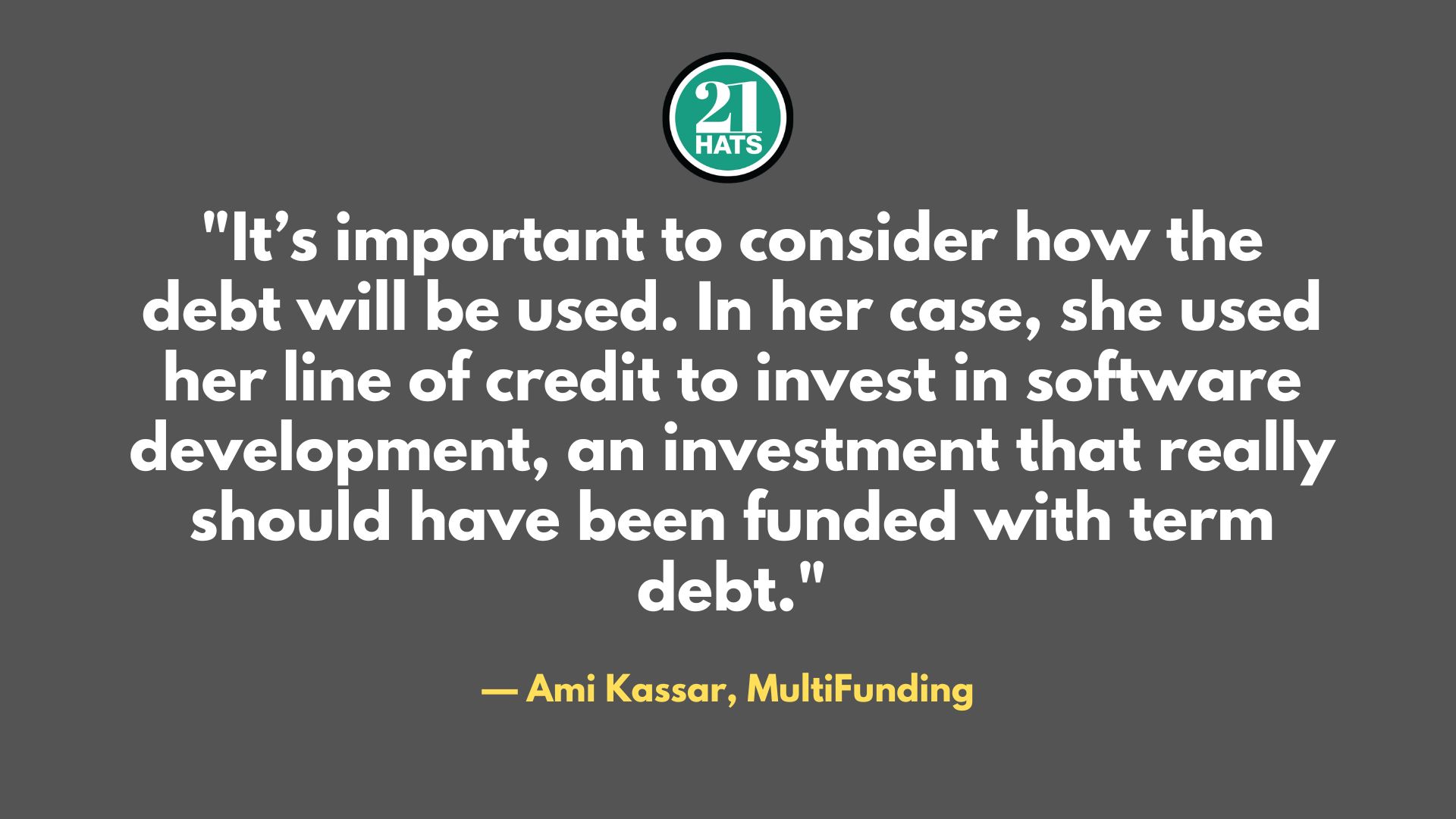When Your Line of Credit Is Maxed Out

When looking to invest money in your business, your line of credit may look tempting because it’s so easy to access. But that can be a mistake.
By Ami Kassar
At MultiFunding, we are receiving more calls than ever lately from business owners whose lines of credit are either maxing out or coming up for renewal. Many of these owners aren’t sure what to do.
A central theme runs through their stories. It can be easy to forget how important it is to maintain capacity in your line of credit to deal with the unexpected surprises that come around the corner. One of the core functions of a line of credit is to be there as an insurance policy, and if our economy is softening, as many suspect, the safety valve of a line of credit is more critical than ever.
Before I tell you about a couple of the calls I’ve taken recently, it’s important to understand the differences between term debt and a line of credit. Term debt is a loan with a set payment plan scheduled over several months or years. For example, if you borrow $50,000 and pay the money back with monthly payments over five years, you’ll be paying an interest fee and a predictable principal amount.
On the other hand, a line of credit is a loan that offers more flexibility regarding the timing of paying the money back. After you set up your line of credit, the lender tells you the maximum amount you can borrow. You can borrow money whenever you need it, pay it back on your schedule, and then borrow it again. Lines of credit require you to pay the money back quickly, and many lenders require that you have a zero balance at some point each year, meaning you need to pay back everything you’ve borrowed.
Let’s review two stories. Last week, I spoke with an entrepreneur whose company has revenue of about $1.5 million and is profitable. She has had a line of credit of about $150,000, which is appropriate for her size company. Remember, my rule of thumb is that your line should be about 10 percent of your top-line sales.
Her issue is that her line of credit is close to being tapped out, and she wants to increase it. Before deciding what to do, it’s important to consider what the money was used for. In her case, she used her line of credit to invest in software development, which is an investment that really should have been paid for with term debt. That’s because the proceeds were being used to make a long-term investment in her company, which would take some time to pay back and start producing revenue for her.
Our recommendation to her was to “term out” the line of credit by converting the debt to term debt. That would allow her to keep the line of credit open and available for emergencies. She should consider using an SBA 7(a) term loan or a conventional loan when terming out the open balance. In this instance, the primary benefit of using an SBA loan is that it would give her 10 years to pay it back instead of five. That means her monthly payments would be lower.
This entrepreneur plans to invest an additional $100,000 in further software development. Combined with the term loan, this should allow her to develop the software while keeping the line of credit available for emergencies that always seem to arrive at the worst possible moment.
In another situation, we heard from the owner of a consumer products company whose debt we’d helped refinance and restructure about seven years ago. This was done with an SBA 7(a) term loan and a $350,000 SBA line of credit, but the SBA line expires in 60 days, and the term loan has a balance of $350,000. The owner’s SBA lender is unwilling to renew the line of credit because the company has lost money in the past few years, primarily because of increased shipping costs.
Not having a line of credit could be a problem for this company. There are likely to be points during the year when the company will want to draw on its credit line to pay for seasonal inventory or to withstand spikes in accounts receivable. While the recent losses will make it difficult for this borrower to get a traditional line of credit, the company will most likely be able to get an asset-based line of credit from a bank or private lender secured by their accounts receivable and Inventory. They need to sort this out quickly before their holiday season.
The core lesson in these stories is to pay careful attention to your working capital needs and requirements and put a good buffer in place to prepare for unexpected emergencies. Remember the real reason you took out that line of credit, and remember to review your debt regularly.
Ami Kassar is CEO of MultiFunding.